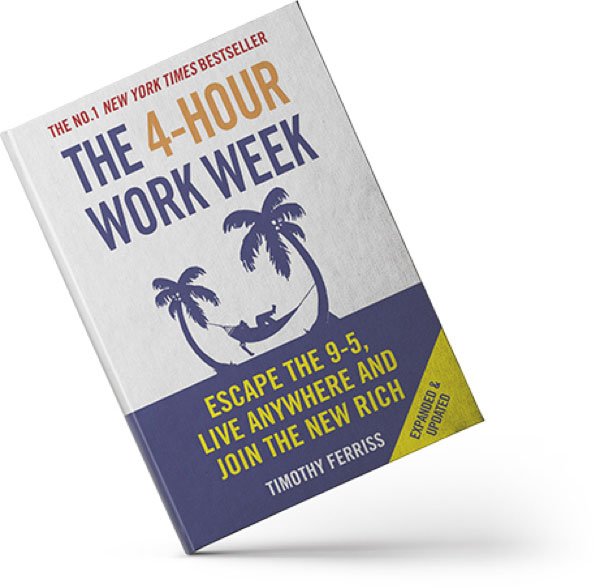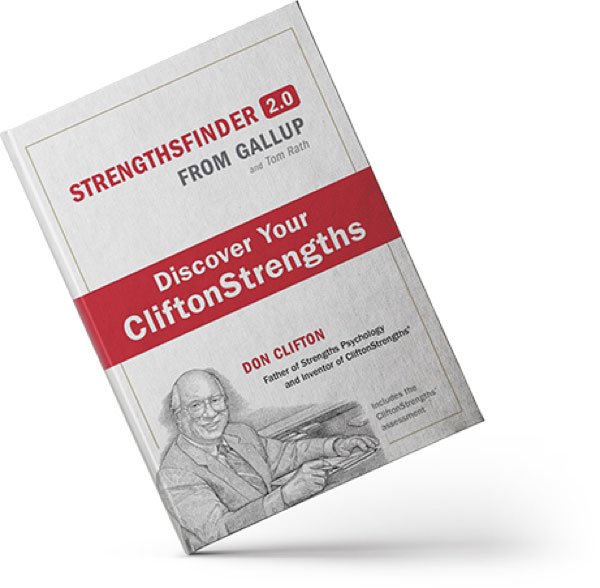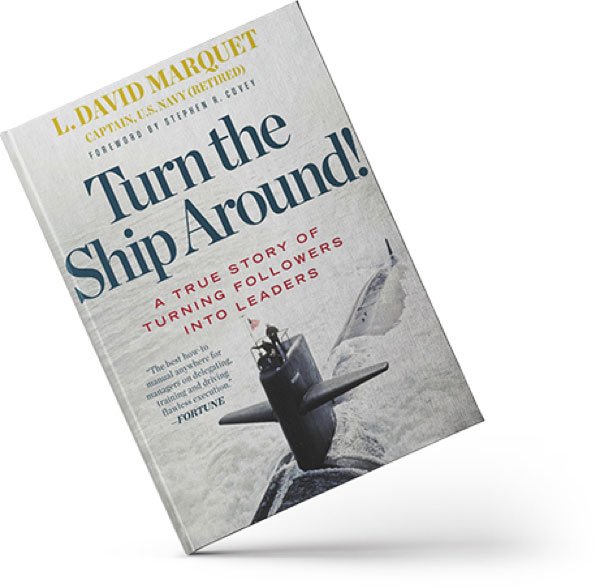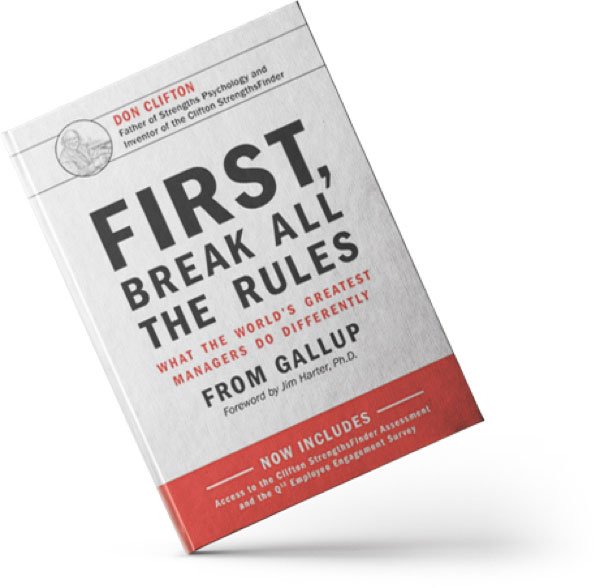On Tuesday 19 March, with all the subtlety of an M4 Sherman, Cooper Parry’s Finance Think Tank rolled into Gordon Ramsay’s Bread Street Kitchen & Bar – The City, in the bustling heart of London.
Contrary to one of the fiery chef’s iconic one-liners, there wasn’t an ‘idiot sandwich’ in sight. Quite the opposite, in fact.
Owners and finance leaders from some of the UK’s most exciting businesses followed us through the doors and down the stairs into the lavish event space. Hungry for insights, expert advice, tips to fine-tune their businesses and personal finances, and some delicious food to boot.
While the venue’s wonderful employees took care of the latter, our field-leading speakers dished out the rest. Fresh connections were made. The learnings flowed as freely as the wine. And we’ve compiled all the best bits from the nugget-filled sessions below.
ECONOMY OVERVIEW: THERE’S HOPE FOR GROWTH
Eternally opinionated. Universally respected. Is Mark Berrisford-Smith the Gordon Ramsay of economists? He probably won’t thank us for that likeness, but we’re thanking Mark for a memorable presentation on the current state of the economy, and, as he called it, the “pulp fiction” that was the recent Budget.
On a global scale, a modest revival is underway, and there’s noticeably more growth worldwide than there was six months ago.
“China is still in a mess,” Mark told us. “And parts of the EU, like Germany, France and the Netherlands aren’t doing terribly well. But, the Americans are going great guns, and the Japanese put up an interest rate this morning for the first time in 17 years – the last country to come out of negative rates.”
“The Ukraine war put commodity prices in a spin,” he continued, “but gas and oil markets now remain reasonably calm, and we’re getting back to the sorts of levels for gas prices that we used to be familiar with.”
“With energy prices going down, it’s beginning to feed through to ordinary people and the amounts they pay to businesses. We stand a fighting chance of the global economic recovery continuing – and maybe even gathering some pace.”
In the UK, there’s a similar glimmer of hope. After two years of zero growth – something Mark can’t remember ever happening in recent history – the UK economy grew by a modest 0.2% in January. And with inflation and energy prices coming down, people should be more willing and capable to spend more money as we go into next year. In 2025, Mark predicts – and hopes for – 2% growth. Something we haven’t had since 2017.
So, what’s standing in our way?
Our population, on average, is saving much more. “Usually, people would keep back 3 – 4% of our income,” Mark told us. “For a decade before 2008, that figure would have been negative. Suddenly, last year, people decided to save 6%, and that adds up to about £30bn that could have gone to businesses. If we continue to save 6% next year, the economy won’t reach 2% growth.”
“The labour market is still far too tight as well,” he continued. “The vacancy count is still far too high, around 900,000. It needs to go down below 800,000. We’ll get there, but how long will it take?”
We’ve also got over 9 million people classed as ‘inactive’. Many of those are students, sure, but with GDP per head falling in 2023, it’s set to do the same in 2024, and those numbers will need to change if we want the wheels of growth to start turning.
Finally, when you’re faced with an economy that has under-invested for years, with our highest tax burden since the 1940s, can a Spring Budget, or a new government, set us on the right track?
Regarding the Budget, certainly not this year, according to Mark. He didn’t mince his words as he laid into Jeremy Hunt’s announcements, calling them “unaffordable”, and saying “the politics outweighed the economics.”
New governments seldom have a big impact on the growth of the economy, either, as Mark’s stroll down memory lane to previous years when Labour took power showed us.
“Winning the next election could be a poisoned chalice. In an economy that has under-invested for years, how do you get it to grow? How do you make the public spending stack up? It’s going to be difficult, but Labour are in a unique position to challenge key areas like the size of the welfare state and the current NHS. The Tories would find it very hard to do that. While the days of zero growth are now behind us, it won’t be dramatic. I’m hopeful for next year, but we’ll still be restrained by labour market shortages for a while.”
BUDGET SUMMARY & LABOUR’S TAX POLICIES
Amy Robins, Tax Partner at CP, and Daniel Morgan, our Partner & Head of Tax in the South, formed a detail-dishing duo, tackling the personal and business tax implications of the Budget respectively.
As you may have guessed, there was plenty to cover. And we’ve dived into all the updates across both areas in our Budget Booklet. So, if you want to get the lowdown on the Budget’s biggest announcements and what they mean for you and your business, check it out here.
We’ve also pulled together an update on all the property tax changes in the Spring Budget. If you’re a property owner, investor or landlord, head here.
One thing we haven’t covered yet, which Amy and Daniel shared with us, is Labour’s tax policies – a useful foresight if the current polls reflect the election’s final result.
There will be no increase in the Corporation Tax charge of 25% because it’s capped. The good news for those of you tapping into capital allowances and innovation reliefs is they’ve committed to maintaining full expensing, R&D tax credits, the Patent Box regime and the Annual Investment Allowance. Within their first six months of power, they’ve also pledged to draw out a business tax roadmap.
There will be multilateral initiatives, including a global minimum rate of Corporation Tax, a deal on the taxation of digital multinationals, and concerted action to tackle tax avoidance. They will also be strengthening the current windfall tax on North Sea oil and gas producers. And replacing business rates with a new system of business property taxation to rebalance the burden between high street businesses and digital multinationals.
VAT and business rates exemptions will be removed from private schools, and the Stamp Duty Land Tax surcharge on overseas buyers will increase.
Other rumoured changes include a reintroduction of the pension lifetime allowance (LTA) of £1.073m, with a carve out for public sector workers. We could also see an increase in Capital Gains Tax, but it’s rumoured that it won’t align with Income Tax rates, and it raises questions about Business Asset Disposal Relief.
As part of Labour’s efforts to close more loopholes, Private Equity bosses are set to pay a 45% tax rate. And finally, even though Jeremy Hunt stole their thunder in a fairly blatant vote-grabbing ploy, the ‘non-dom’ tax regime will be scrapped and replaced by a residency-based regime, impacting UK residents whose homes are overseas for tax purposes.
SEISMIC CHANGES FOR R&D
Mark Frost, Innovation Partner at CP, began his session by asking for a show of hands from those making R&D tax claims. The sea of limbs made for an engaged audience. And Mark set about outlining the seismic changes we’ve seen in the R&D landscape – and more monumental shifts on the horizon.
Over recent years, there’s been a lot of conversation about whether the R&D regime is fit for purpose. “Dodgy claims” and “cowboy advisers” have become more prevalent than the government can take. So, we’re seeing ever-increasing scrutiny and regulation in the space.
That includes a new ‘expert advisory panel’, announced in the Spring Budget. The panel will support the correct administration of the R&D regimes, helping to instigate, manage and communicate changes and set strategy. The simplification of the R&D tax regime is another recurring theme – something HMRC have been banging the drum about for a while – and Mark predicts the upcoming changes will hone in on the innovation occurring in core product development and areas at the heart of the regime.
“They’re clearly narrowing what qualifies,” Mark said. “The amount paid is definitely coming down. They’re trying to take it back to where it should have been from day one, 24 years ago, but it all got out of hand over the last 7 or 8 years.”
The ‘merged’ R&D tax regime is one of the biggest changes HMRC has introduced, coming into effect for accounting periods starting on or after 1 April 2024. Confirmed in the 2023 Autumn Statement, the merged R&D scheme combines the current R&D SME and Large Company / RDEC regimes, creating one, simplified scheme.
For expenditure under the merged scheme, there will be a unified relief rate of 20%, which is basically the current RDEC rate. At the Corporation Tax main rate of 25%, this amounts to a net benefit of 15%. Loss-making companies, however, will apply a notional tax rate of 19%, making the net benefit 16.2%.
Restrictions on relief for expenditure on overseas EPWs (Externally Provided Workers) and subcontractors will come into effect for accounting periods starting on or after 1 April 2024. To qualify, the work undertaken by EPWs and subcontractors must have taken place within the UK.
Cloud, data and maths costs, which came into effect as new types of claimable costs from 1 April 2023, will continue under the merged regime. There won’t be any restrictions relating to subsidised expenditure. Companies can claim subcontracted R&D, too, because the government wants the company that chooses to do the R&D and bear the risk to ultimately get the relief. Finally, the merged scheme will use a more generous version of the PAYE / NIC cap, as currently used in the current SME R&D regime.
The ’SME intensive scheme’, announced in the 2023 Spring Budget for the most R&D intensive loss-making SMEs, covering R&D expenditure from 1 April 2023, is also being changed. Previously, a company was considered ‘R&D intensive’ where its qualifying R&D expenditure is 40% or more of its total expenditure. This will be reduced to 30% for accounting periods starting on or after 1 April 2024.
The change allows SMEs to surrender tax losses up to 186% of the R&D expenditure for a payable credit, at a rate of 14.5%, instead of 10%. A year of grace will also be introduced to help in situations where exceptional spending might skew an SME’s intensity ratio for a year, which would have led to the business moving out of the intensive SME regime.
Mark could have spoken for hours about all the changes in R&D, he told us. With so many other greater speakers on the lineup, we didn’t have time for that, but if you want to stay up to speed with a fast-moving landscape, follow the CP Innovation team on LinkedIn here.
BUILDING VALUE & ENABLING LONG-TERM GROWTH
Andy Parker, Partner & Head of Corporate Finance, has unique insight into how to grow your business, build long-term value, and what makes investors want to buy.
“Robust internal controls are key in driving organic value,” Andy shared. “Buyers want to make sure it all stacks up together. It’s hugely important to understand the data and the numbers. You need to create KPIs that measure what’s going on in the business, use those KPIs to make strategic decisions about growth, and really present that to buyers.”
“Data is fundamental to decisions made by buyers and businesses,” he continued. “Private equity investments represent well over 50% of all deals that happen in the UK mid-market. Private equity houses are very analytical people, too, so you need to back it all up.”
Taking the right steps to create a solid financial basis allows the performance of the business to be clearly understood by all parties. It will help you go through regulatory and audit processes, as well as legal and financial due diligence in the event of a sale. Grounding your financial performance in KPIs linked to the commercial cycle of the business will also give you the data you need to make informed decisions on future projects and investments.
Another common way to build value is through external M&A. Bolt-on acquisitions continue to dominate the global deals market, accounting for 70% of all private equity-backed deals over the last couple of years.
The rationale for a buy and build strategy is simple. Executed well, it can create substantial value for the combined group, at a much quicker pace than organic growth. While bolt-on acquisitions give you access to new skills and capabilities, they can take you into new markets and geographies too, diversifying your business and increasing your customer reach.
The benefits are huge. But not every buy and build journey strikes gold. The strategy exposes the acquirer to a greater level of regulatory hurdles, operational and strategic risks, and market uncertainties.
Some key things to consider are structuring the deal efficiently to make it align to the objectives of the transaction, the arrangement of funding, which often comes from private equity and/or debt, and what you’ll need to focus on to form a complete, tailored due diligence and deal management process. There are significant valuation risks at play, with overpayments and underpayments both common.
You need to have a certain level of strategic and cultural alignment between all parties on long-term goals, too. Integrating new companies can have unintended consequences on talent retention, and retaining key personnel is essential to realise the full benefits of your acquisitions.
If you are thinking about growing your business through acquisition, our recent CP Deals report on Buy and Builds is full of useful information. It discusses how to maximise returns and synergies and provides great case studies of successful buy and build platforms. Take a look here.
OMBS & MID-MARKET FINANCE TEAMS: WHAT SUPPORT IS OUT THERE?
Candice Young’s session followed on nicely from the topics Andy covered at the beginning of his. Candice is a Partner in our Business Services & Outsourcing team. She works with owner-managed businesses and mid-market finance teams, helping them to get the right processes, platforms, data and people in place to support their growth journey.
Often, that involves outsourcing. And that’s because fast-growing businesses and their leaders need to be mindful that they always have the correct levels of knowledge, money, and time.
If you’re looking to grow, take on PE investment, or acquire other businesses, you’ll need a lot of specific knowledge to get ready for diligence. Outsourcing is a powerful way to bolt skills onto your finance team and get the right people in the right seats.
HR, data, audit and tax regulations are ever-changing. Is your finance team well-equipped to keep you up to date? Are your systems and processes fit for purpose? And are they growing with you? As Andy said, your internal processes need to be robust, and outsourcing and help with implementation can upskill your team.
Of course, all of this requires money – and you need to make sure you’re utilising yours correctly, Candice told us. Think about how you want to spend and invest your finances. Research your market and analyse your teams and systems to build an informed business case, backed up by data. It will help you spend your money wisely, figure out if you need the investment at all, and highlight areas where you can create efficiencies and improve your bottom line.
Getting the most out of your time is the third key consideration that Candice mentioned. “Businesses run pretty lean when it comes to a finance team,” she told us. “They want to save resources for other areas. So, you need to ask, are we doing the right things? Are we taking too long on tasks that aren’t important? Do we have enough time to focus on business-critical items? So many people and businesses are time poor, and outsourcing can help with that.”
Technology and automation are a big part of the solution – and something Candice and her team chat to clients about often. “Finance teams are becoming increasingly tech-led,” Candice shared. “We’re seeing a lot of RTI (Real Time Intelligence), AI (Artificial Intelligence), and RPA (Robotic Process Automation) – all this automation around data and processes, because we don’t want to be bogged down doing that. We want our people to add value with what they’re doing, freeing up their time to step back, look at the data, and make really good business decisions from it.”
“Lots of businesses, even quite large ones, don’t have management information that’s fit for purpose and appropriately presented,” she continued. “So that’s another thing to think about that outsourcing can help with.”
Technology can’t revolutionise a business on its own though. You need the right people in the right seats. We’re facing a big talent shortage in the market, but location is less of a factor nowadays and different roles are becoming popular, such as Data Analysts. Carefully assessing the cost vs benefit of any new hire is more important than ever, and outsourcing can be a useful way to gain quick access to the skills you need and ‘test the waters’ before committing to a full-time hire.
INFLATION RATES, INVESTMENTS & FINANCIAL PLANNING
Sky-high inflation. A rapid rise in interest rates. Massive amounts of global debt. A future of high taxes. Two ongoing wars. And two upcoming elections in the UK and US.
At first glance, you’d be hard-pressed to keep calm, control your emotions and take a long-term view of your investments with so much uncertainty in the world. But, that’s exactly what you should be doing, as Ewan Rosie, Chief Client Officer at Cooper Parry Wealth shared.
In 2016, The Guardian published an article, titled: “Sell everything ahead of stock market crash”, says RBS economist.
“If you’d taken that advice, you’d have missed out on 30% growth,” Ewan told us. “The point is, maybe things aren’t always as bad from an investment perspective as the headlines tell you. Elections don’t have a big impact on the stock market when you take a long-term view, and the stock market has proven to be very resilient time and time again, and a great mechanism for providing returns to long-term investors.”
Humans aren’t wired to be successful investors. There are too many emotions, and subsequently, knee-jerk reactions at play. A study by JP Morgan that Ewan flashed up illustrated this perfectly. Over a 20-year period, the average investor, i.e., someone doing it on their own, leaves an awful lot of returns on the table compared to the different asset classes you can invest in.
So, why do these average investors fare so badly?
The media has a big impact. Negativity sells. It drives clicks. A stock market downturn is much more likely to hit the headlines than a boom – and these average investors immediately think their money is better placed elsewhere.
Social media is another important factor. We’ve never had such regular and quick access to information, and in many cases, they’ve become our go-to platforms to find out more about something we’re not clued up on.
If that something is investments, you could be taking a considerable risk, Ewan explained. “Humans are inherently greedy,” he continued. “Why would you put an investment tip out for thousands of millions of others to benefit from? We have no way of knowing how accurate the source is, or its motive. You’ll probably have seen sponsored ads telling you to invest through this platform and get massive returns. In most investment markets, it’s not usually an easy ride. Depending on what you invest in, it can be quite volatile. Let’s take crypto as an example, when the value drops, you could be tempted to get out and sell what you have, but that could lead to you losing a whole lot of money.”
The biggest returns come from the shortest periods, which means trying to time when you go in and out can be a very costly ploy. Ewan showed us the S&P 500 as an example. If you invested $1,000 over a 20-year period, you’d have come out with $26,322 – strong returns by anyone’s standard. However, if you missed the 25 best-performing days in the market over that period, your returns would have fallen to $5,632.
So, accept the stock market is tough to beat. Accept risk and return are related – if something seems too good to be true, chances are, it is. Don’t put all your eggs in one basket – spread the risk and diversify your investments. Find out what returns you need from your money to live your ideal lifestyle, so you can figure out how to structure your investments. Keep your investment costs low. Control your emotions, drown out the media noise, and always take a long-term view.
That way, you can focus on what you really value, the things you want to achieve in the future, and ultimately, stick to a plan that can make it all happen.
If you’d like to hear more our Wealth. Life. Balance event is taking place on 8 May, London. Where we’ll be talking about investing sensibly, paying less tax and making life count. You can find our more HERE
HUNGRY FOR MORE?
Head over to our News page to read the latest stories from across CP, check out our upcoming Events, or sign up here to stay in the know and receive our newsletters and event invitations going forward.


















